By Dan Weisz
Early in July I visited the Paton Center in Patagonia in southern Arizona while on my way to Fort Huachuca for Hummingbird banding. It is really an oasis that anyone can enjoy. For information, see the Tucson Audubon page(s) at http://tucsonaudubon.org/go-birding/tucson-audubons-paton-center-for-hummingbirds/
The Paton Center is famous for their hummingbirds and has been an international birding destination for decades. Situated along Sonoita Creek and adjacent to the Nature Conservatory’s Patagonia-Sonoita Creek Preserve, this location is perfect for visiting hummingbirds. Below is a close-up of one of the many male Broad-billed Hummingbirds feeding that day.
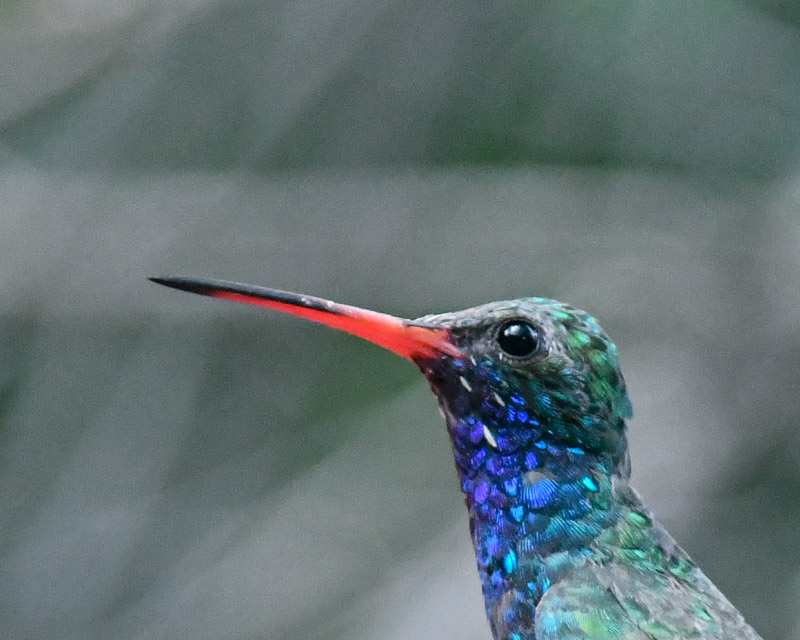
There were flowers everywhere and I found a Checkered White butterfly dining on one.
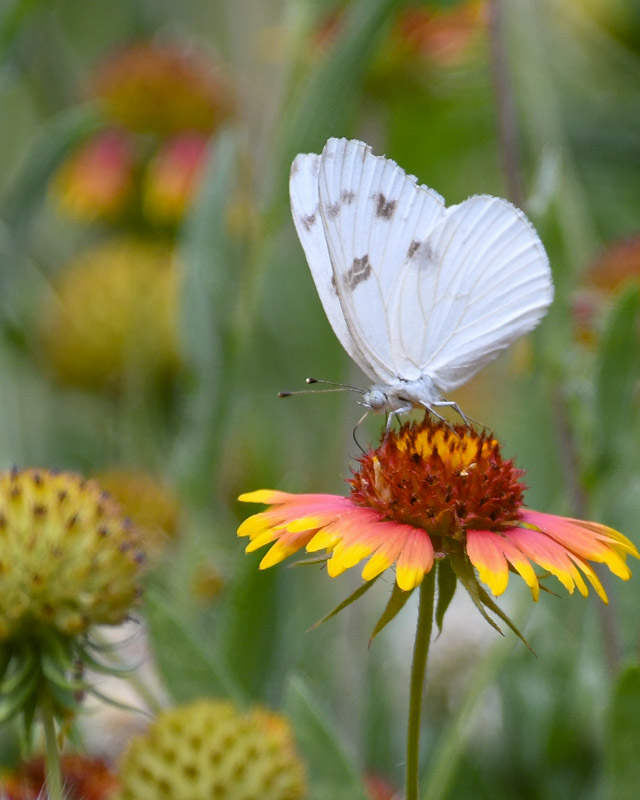
Many native flowers have been planted in the “Meadow”, attracting a variety of pollinators including this Sonoran Bumblebee.
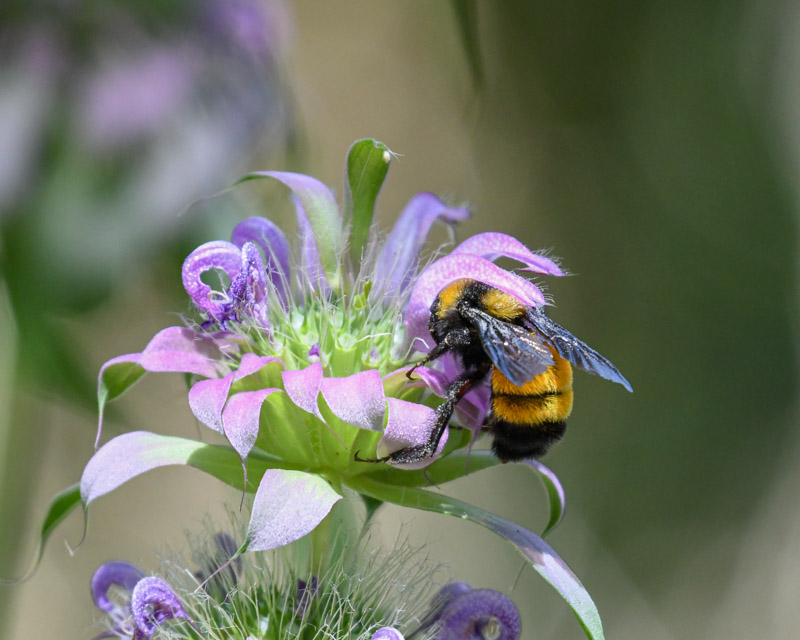
Here is an article in the national Audubon’s website on the Paton Center: https://www.audubon.org/news/how-small-home-arizona-became-global-birding-destination
If you want to see a Violet-Crowned Hummingbird in the United States, you come to “the Paton’s”. Violet-crowned Hummingbirds are medium sized and are the only hummingbirds in the US without a colored gorget (the feathers on the neck under the bird’s beak). Violet-crowned Hummingbirds are very white underneath and have a reddish beak with a black tip. Notice how the crown of this bird seems to lack color, although there is a hint of purple on its head.
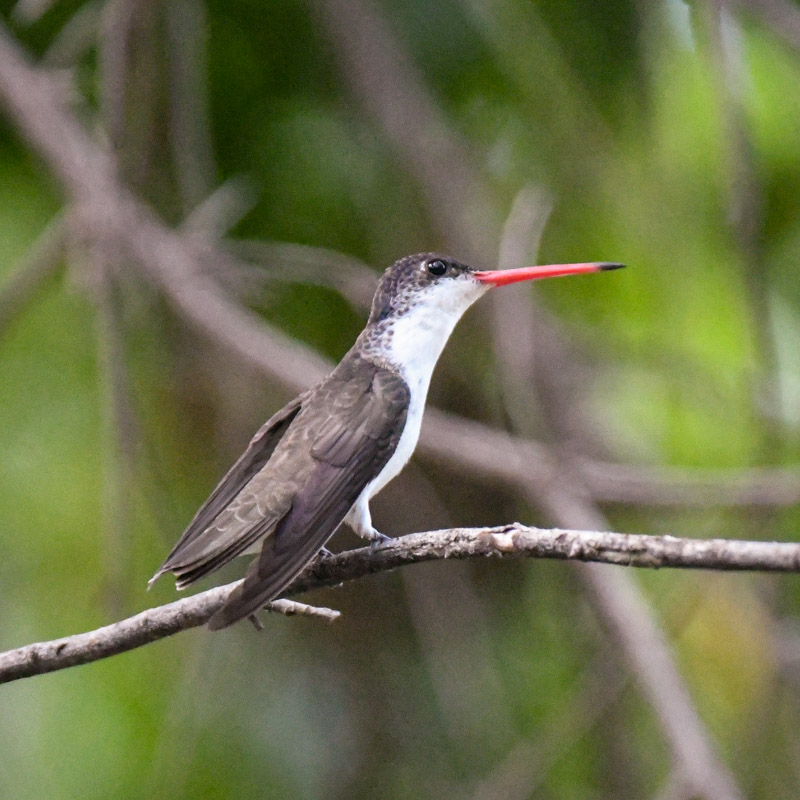
As soon as the hummingbird turns and the sun hits those feathers differently, the violet crown jumps out at you as in the photo below.
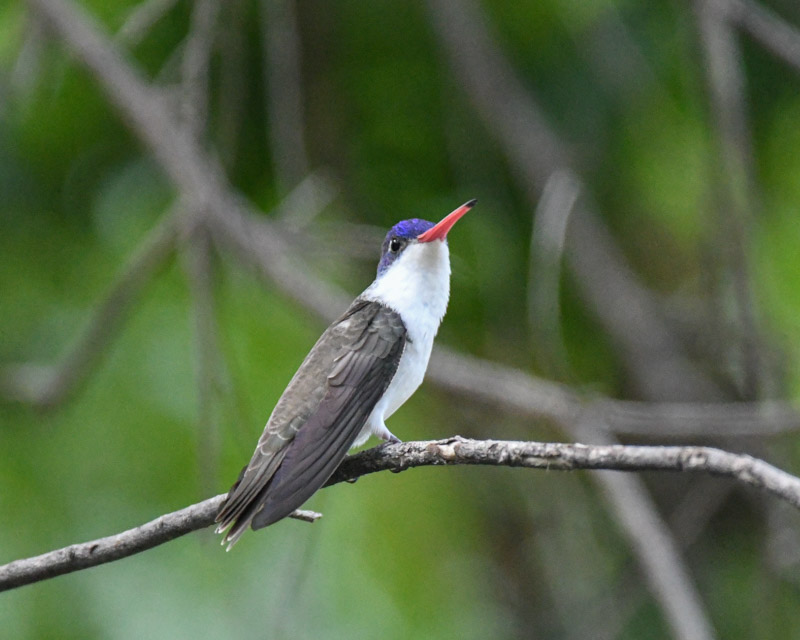
For a simple explanation of how the hummingbird’s feathers ‘change’ color from a flat black to a shiny violet, see https://wildbirdsunlimited.typepad.com/the_zen_birdfeeder/2012/05/the-hummingbirds-fickle-red-throat.html
For a more complicated and scientific reason, see https://www.sibleyguides.com/2011/09/the-basics-of-iridescence-in-hummingbirds/
And then with a simple turn of the head, the violet color disappears leaving the black-tipped red bill and white belly and chest.
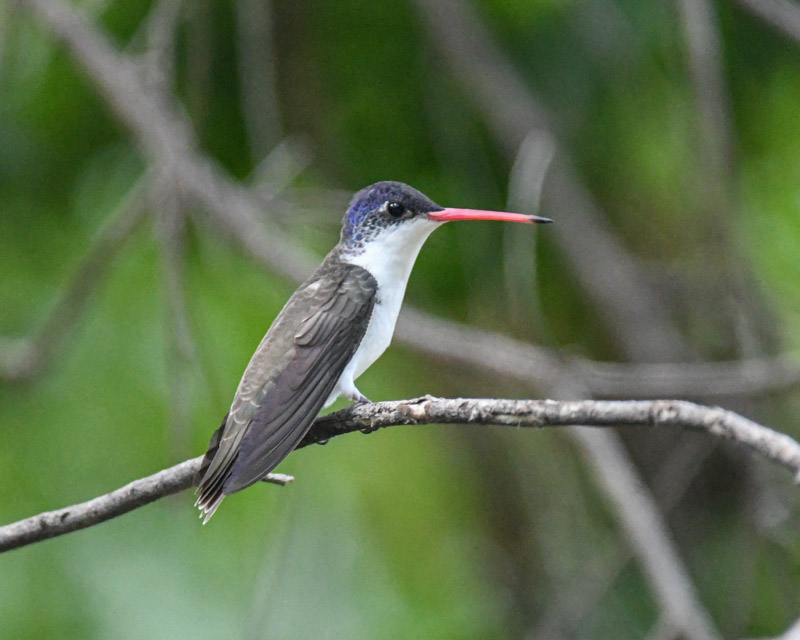
And then back again.
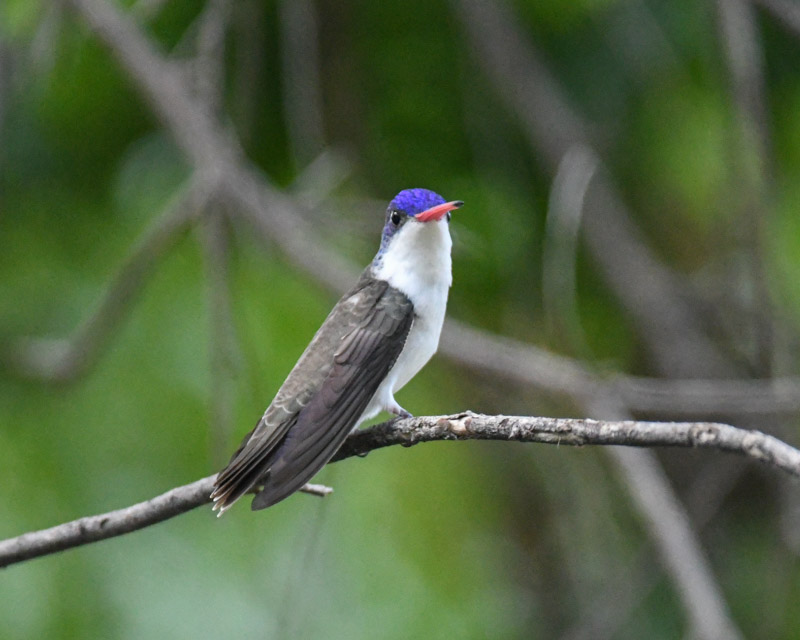
After leaving the Paton Center, I drove to Fort Huachuca for the hummingbird banding. The Parade Grounds on base is where that is done each summer and, besides the white-tailed deer we have been seeing there, the field held quite a few Gould’s Turkey. This young male has the bare blue and red head typical of these turkeys. Two of the features of a turkey’s head sound like they were named by Dr. Seuss. That growth above the beak and in front of the eyes is called a “snood”. Those strange red things on its neck are called “caruncles”.
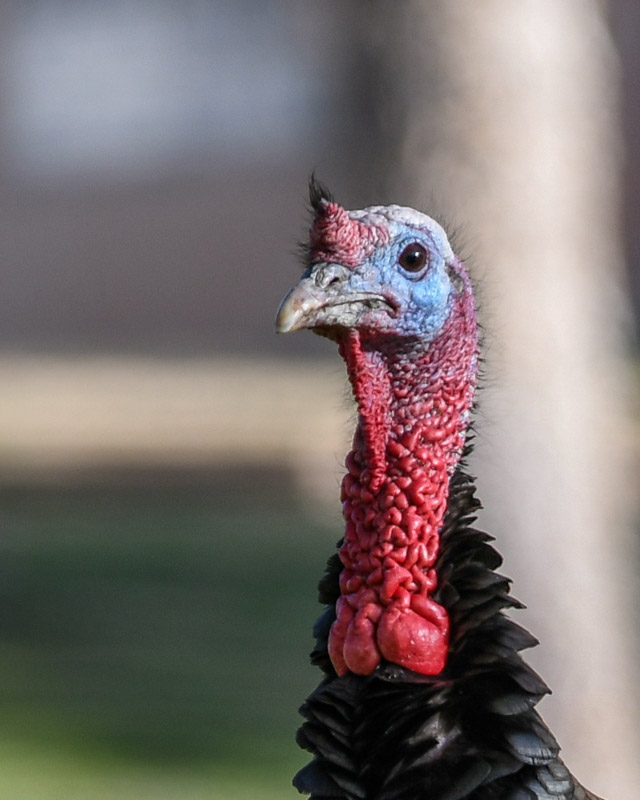
On this adult you can see how its “snood” is much longer and is now hanging beyond its beak. His tail feathers are spread in the “typical” turkey-looking fashion. You can also see the turkey’s “beard”, a cluster of modified feathers that look like hair and hang from the center of its chest.
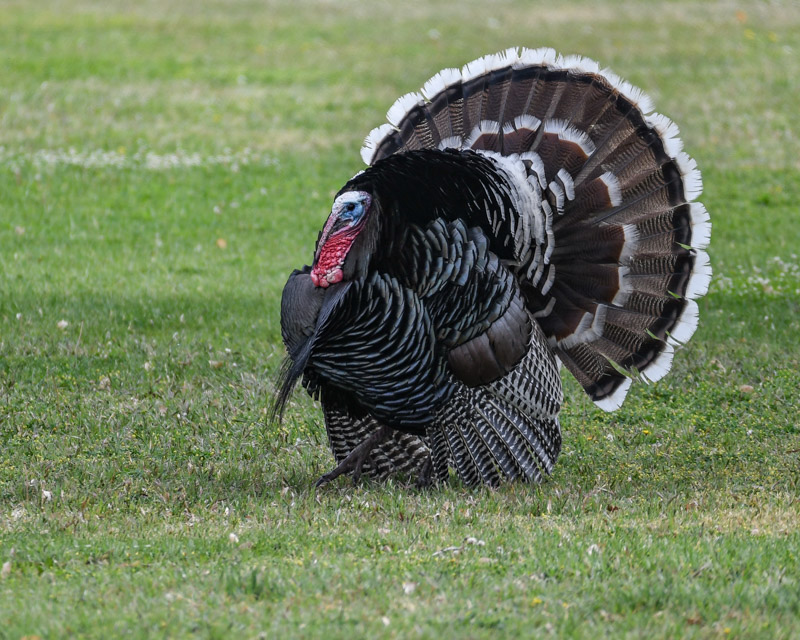
And finally, I was very lucky to see an Elegant Trogon on my walk up Huachuca Canyon later that morning. Many kinds of trogons live in tropical forests but only one species occurs regularly in North America- the Elegant Trogon. They are one of the most sought-after birds by bird watchers in the US and they breed in the ‘Sky Islands’ of southern Arizona.
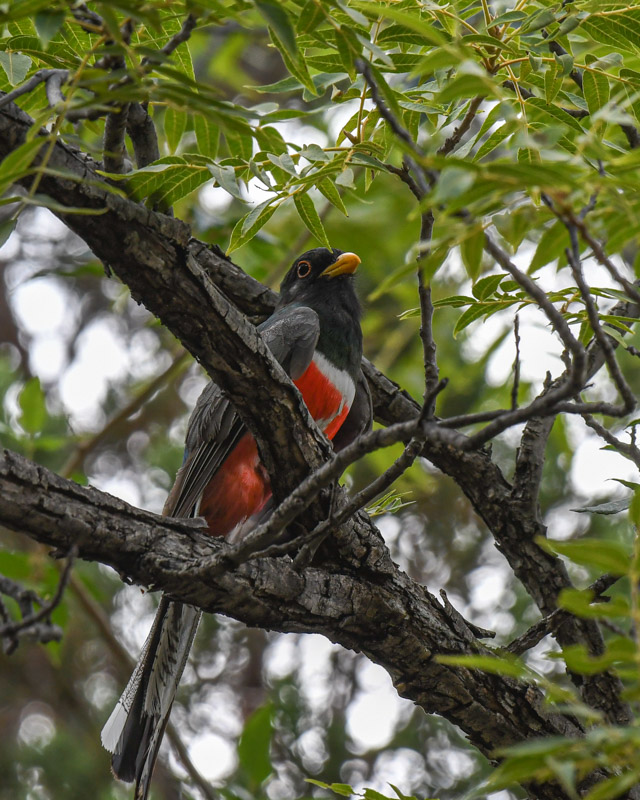
Usually you can hear trogons long before you can see them, if you are lucky enough to see them at all. You can listen to some elegant trogon sounds at this webpage:
